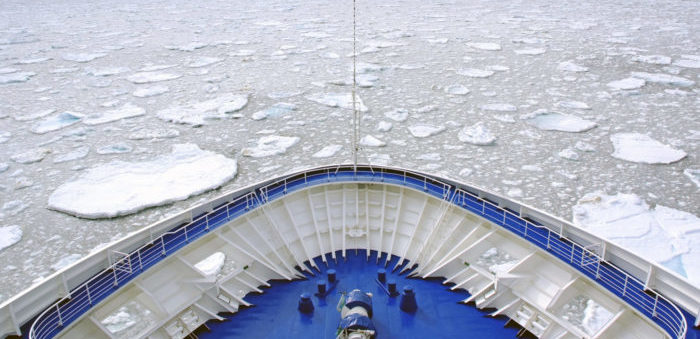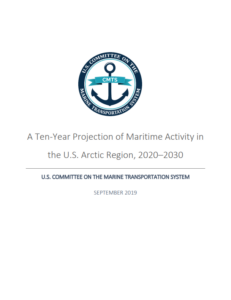A newly-launched report provides information on the past and present activity patterns in the northern U.S. Arctic and surrounding waters around the Bering Strait, while also projects if the number of vessels sailing in the Arctic region in the future will be increased by 2030, examining four scenarios.
The U.S. is an Arctic Nation, with over 46,600 miles (75,000 kilometers) of shoreline in Alaska, including the Aleutian Islands. Three Arctic seas bound the State of Alaska: the Bering, the Chukchi, and the Beaufort.
Namely, the US Committee on the Marine Transportation System (CMTS) released its report, “A Ten-Year Projection of Maritime Activity in the U.S. Arctic Region, 2020–2030”, estimating that 377 vessels could be operating in the region by 2030.
The four scenarios that the Committee examined are:
- Reduced Activity Scenario;
- Most Plausible Scenario;
- Optimized Growth Scenario;
- Accelerated, but Unlikely Scenario.
Each one of the four scenarios provides a different possibility for vessel activity in the northern U.S. Arctic and surrounding waters over the next decade, ranging from annual growth rates of 0.3% to 4.9% and total annual vessel counts of 284 ships to 535 vessels.
Specifically, The Most Plausible Scenario estimate of 377 vessels represents nearly 50 percent growth over current levels and over 200 percent growth from 2008 levels.
The report notes that
The Most Plausible Scenario, based on conservative assumptions, indicates that the number of vessels operating in the U.S. Arctic in 2030 is likely to be more than triple the number of vessels in 2008, while the highest estimates included in the Accelerated, but Unlikely Scenario reflect growth more than four times the 2008 numbers and twice the number we see today.
In the meantime, the report resulted to the findings below:
- The Arctic waters around the Bering Strait are transitioning from having a mix of regional operators to an increasingly diverse and international set of operators, with the number of unique vessel flag states increasing by 28% in recent years;
- The coastal waters in the Bering Strait remain some of the most heavily transited in the region;
- The navigation season grew from 159 days in 2016 to 180 days in 2018, as measured by vessel presence.
Concluding, over the next decade, it is anticipated that natural resource activities in the Arctic, particularly the growth of LNG shipments from Russia and vessels needed to resupply mining operations in northern Canada, will play a large role in the volume of traffic transiting through the Bering Strait.
Recently, to protect the Arctic and the environment, the Arctic Council and the Arctic Economic Council conducted their first joint meeting in Reykjavik to discuss the future of Arctic, marine transportation and blue economy, following comments of the Arctic Circle that although the route has experienced an increased economic growth the last years, it affects population, as many are those who are moving out.
To explore more click on the PDF herebelow































































